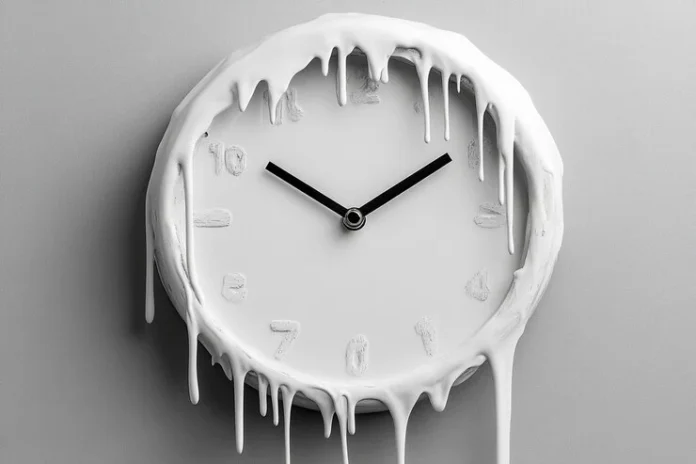The melting clock, made famous by Salvador Dalí’s iconic painting The Persistence of Memory, has become a universal symbol of surrealism and the distortion of time. Whether you’re an art enthusiast, a history buff, or simply curious about its meaning, this editorial dives deep into the origins, symbolism, and ongoing influence of the melting clock in contemporary culture.
What is a Melting Clock?
A melting clock refers to the visually distorted, softened clocks featured in Salvador Dalí’s surrealist works. The most recognizable instance of this imagery appears in Dalí’s 1931 masterpiece The Persistence of Memory. In this painting, pocket watches are shown drooping over tree branches, ledges, and abstract forms, as if time itself is melting.
But the concept of a melting clock extends beyond art. It has become a symbol of time’s fluidity, representing the subjective experience of time, memory, and reality. Today, it’s featured in everything from home decor items to pop culture references.
History of the Melting Clock: Salvador Dalí and Surrealism
Salvador Dalí’s Inspiration
Born in 1904, Salvador Dalí became a prominent figure in the surrealist movement during the early 20th century. Surrealism, known for its dream-like visuals and exploration of the subconscious, was the perfect medium for Dalí’s wild imagination.
The melting clocks in The Persistence of Memory were inspired by a simple moment. According to Dalí, the idea for the drooping clocks came while he was observing a piece of Camembert cheese melting in the sun. This everyday moment sparked the idea of depicting time as soft and malleable, contradicting the rigid nature of traditional clocks.
The Persistence of Memory (1931)
The Persistence of Memory is one of Dalí’s most famous works and the best-known representation of the melting clock. The painting is housed in the Museum of Modern Art (MoMA) in New York City, where it continues to intrigue visitors from around the world.
The work’s distorted clocks symbolize the fleeting nature of time, where the past, present, and future blur together. In this surreal landscape, Dalí challenges the conventional understanding of time, space, and memory.
Symbolism of the Melting Clock
The melting clock holds deep symbolic meaning, particularly within the context of surrealism and Dalí’s personal philosophy. Here’s a breakdown of some key interpretations:
Time as Fluid and Subjective
The soft, pliable nature of the melting clock suggests that time is not fixed but rather subject to perception. The painting reflects how time can feel slow or fast depending on one’s experiences, underscoring its emotional and psychological dimension.
Impermanence of Life
Many art critics believe the melting clocks represent the impermanence of life. Just as the clocks appear to decay and melt away, so too does life. This aligns with surrealist themes of existentialism and the human condition.
Memory and Subconscious
The melting clocks may also be interpreted as a symbol of memory’s unreliable nature. Memories fade and change, much like the soft, distorted clocks in Dalí’s painting. This ties back to the surrealist goal of exploring the subconscious and irrational mind.

The Melting Clock in Pop Culture and Modern Art
Pop Culture Influence
The melting clock has had a lasting impact on popular culture. Its distorted imagery is often referenced or parodied in films, TV shows, and literature. For instance, the world of science fiction and fantasy frequently uses warped clocks and time distortion as metaphors for time travel, alternate realities, or dreamscapes.
In modern home decor, melting clocks have become a quirky design element, with replicas of Dalí’s melting clocks available as decorative pieces that hang off shelves and tables, evoking the surreal aesthetic.
Modern Artists Inspired by Dalí
Dalí’s work continues to influence contemporary artists, especially in the fields of surrealism and abstraction. Some artists use similar themes of time distortion, while others explore the relationship between memory and reality through melting or fragmented objects.
Why the Melting Clock Resonates Today
The appeal of the melting clock goes beyond its artistic roots. In today’s fast-paced, ever-changing world, people are more aware than ever of the subjective nature of time. The rise of mindfulness practices and the increased focus on living in the present moment make the melting clock a fitting symbol of our times.
It also resonates with the modern human experience, where time seems to melt away between work, personal commitments, and digital distractions. The idea that time is a flexible, fleeting concept is something that many can relate to, whether they’re aware of Dalí’s original symbolism or not.
How to Incorporate a Melting Clock Into Your Life
If you’re inspired by the concept of the melting clock and want to bring its surreal charm into your daily life, there are several ways to do so:
Home Decor
Melting clock replicas are a popular choice for those looking to add an artistic touch to their living spaces. Available in various sizes and designs, these clocks can be draped over shelves or mounted on walls to mimic Dalí’s iconic design.
Fashion
The melting clock motif has found its way into fashion, appearing on clothing, accessories, and jewelry. Wearing pieces featuring the clock is a creative way to express your love for art and surrealism.
Artwork Reproductions
For true art lovers, owning a reproduction of Dalí’s The Persistence of Memory can serve as a constant reminder of the fleeting nature of time. Art galleries and online stores offer high-quality prints of the painting, allowing you to enjoy Dalí’s genius in your own space.
Conclusion
The clock is more than just an image from Dalí’s surrealist masterpiece—it’s a profound symbol of the subjective experience of time. Its enduring influence on modern art, design, and culture speaks to its powerful message about the fluidity of time and the human experience. Whether you’re a fan of surrealism, interested in art history, or just curious about time’s many mysteries, the clock will continue to intrigue and inspire for generations to come.
